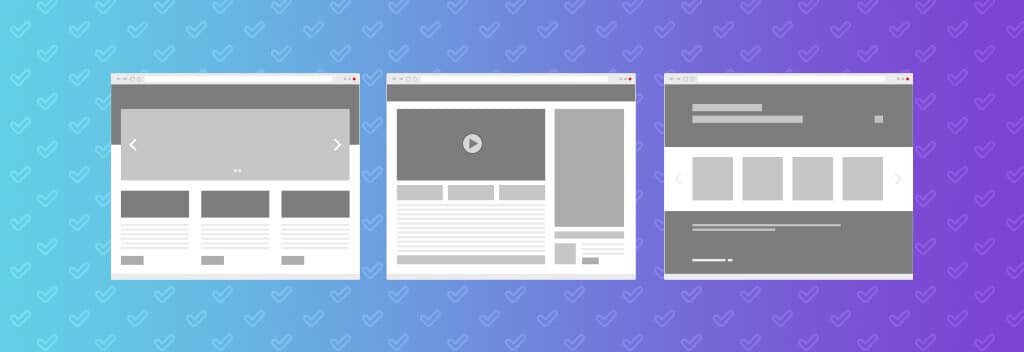The success and value of a B2B website design are measured by how clearly it communicates and resonates with target audiences. Ultimately, these results are expressed by the number of engagements, conversions, and quality leads the website generates.
To get the most ROI from your B2B website design, keep the following 5 tips in mind:
1. Consider Your Competitive Landscape
Is it an open field, or saturated with many competitors? Do all your competitors’ websites share a similar style and/or tone?
Raising your brand above the competition may or may not benefit from a radically different design aesthetic. Market research is a great place to start, but consideration of your company specifics is key. For the most value, strive to have your brand messaging and design accurately reflect your business operations.
If you are a well-established business, a B2B web design that positions you incorrectly as the new kid on the block, or an eager startup, would not create an accurate first impression. Established organizations have many different strengths they can highlight, the most compelling of which is a proven track record. Don’t be afraid to look polished and professional and leverage successful case studies, testimonials, and statistics on your B2B website.
2. Identify Your Target Audiences
How traditional is your target audience? Do you have more than one type of stakeholder who has a say in the buying decision?
If available, target audience demographics can be very useful. Clearly outlining your intended targets provides your B2B website design team with critical insights into what design attributes may best resonate. Examples of your ideal client not only help your design team but also assist copywriters in crafting the most appropriate language for your website.
3. Streamline Your Messaging
Do you have a clear elevator pitch? Do you have a list of unique value propositions that help differentiate you from the competition?
All audiences appreciate a clear and concise message. Pare down your text to the most relevant points, and pace them out to tell your brand story. This strategic editing helps keep audiences engaged rather than feeling overwhelmed with too many details too quickly. Shorter blocks of copy help with pacing and leave critical space in the website design that can then be utilized by appropriate visuals.
Read more: What should my B2B website have?
4. Use Custom Supporting Visuals
Do you have any custom photography or video? Are there any aspects of your business that lend themselves to graphic visualizations, such as product screenshots?
If you do plan on having custom photography or video as part of your B2B website design, let your design team know early on. Clear planning allows your design team to showcase your custom visual assets in the best light. If you believe custom infographics or abstract visualizations of your product or business are needed, this early notice allows for the best outcome.
All successful B2B website designs establish a cohesive visual style that is consistently carried forward throughout all pages. This means any photography, graphic treatments, icons, and visuals should all look customized and fit together within your brand.
5. Avoid Unnecessary UX/UI complexity
Is the amount of movement and interaction on your website helpful or overwhelming? Do complex graphics or visuals help support and clarify your messaging or do they come across as confusing?
In our society we often think more is better. More graphics, more colors, more movement. While these elements certainly have the potential to increase engagement, they also have the power to turn audiences away when not applied strategically. Strive for simplicity and keep your visitors’ goals top of mind. A successful user experience is one in which audiences are welcomed to the right place and can quickly and easily find what they are looking for.
These five tips outline a strategic approach to website design. We have found that the best performing B2B websites all employ custom visuals to enhance succinct messaging.
We’ve also discovered that many websites that try to do too much, in the hopes of looking trendy. At best, adding too many graphics, colors, styles, or animations leaves the design looking cluttered and at worst serves as a deterrent to conversions.
Read more: How to prepare for a website redesign project.
When planning your next B2B website redesign, just remember: Less is more!



